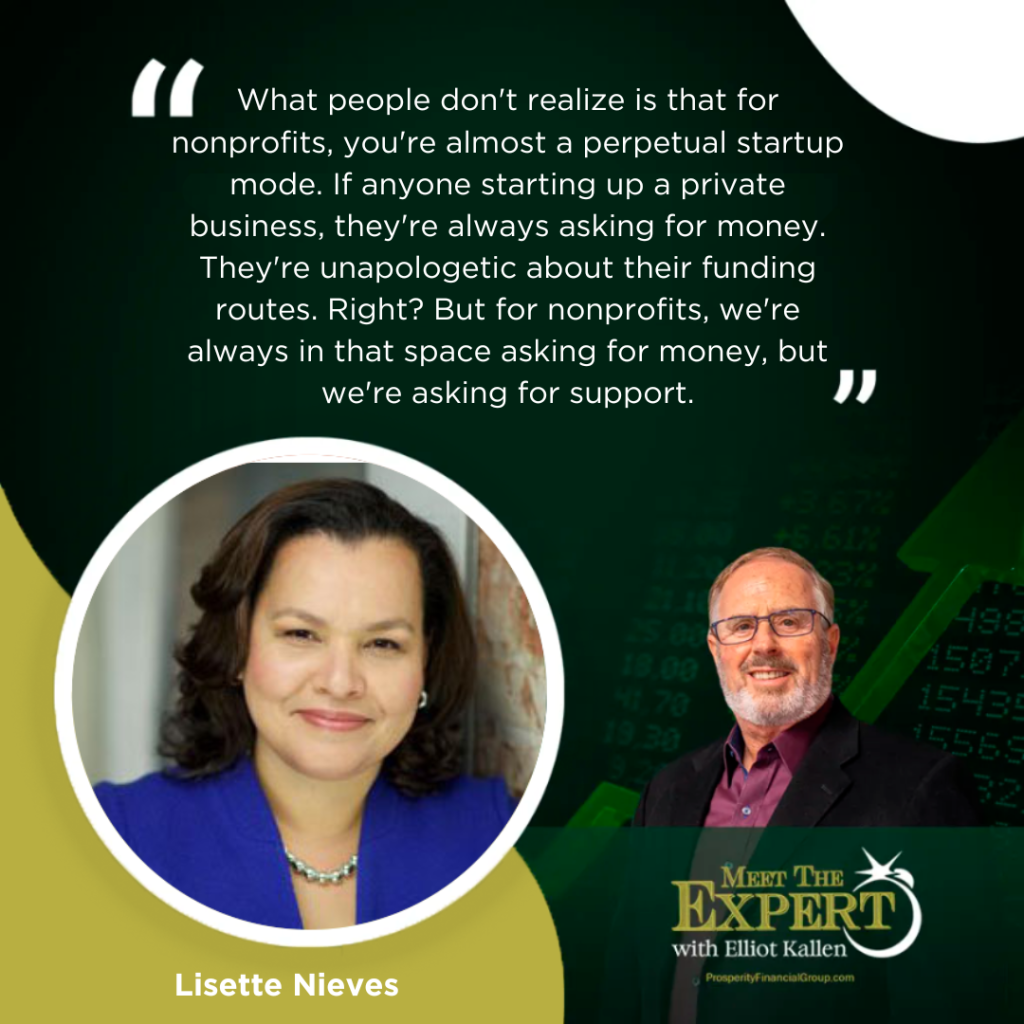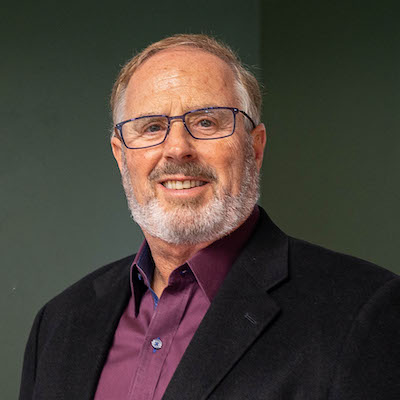Leveraging Capital in Nonprofits with Lisette Nieves
In this episode of “Meet the Expert with Elliot Kallen,” we explore the critical intersection of public, private, and nonprofit sectors. Our guest, Lisette Nieves, President of the Fund for the City of New York, discusses the challenges and innovations within the nonprofit world, particularly how capital in nonprofits is leveraged to drive social impact.
Watch the Episode Here
Public vs. Private Partnerships in Nonprofits
Elliot Kallen: Good afternoon, everyone. Welcome to another amazing edition of Meet the Expert with Elliot Kallen. Today is not an exception to the rule of being super interesting. We are going to interview a professor from New York City, from NYU, one of my favorite schools in the country, in lower Manhattan. My sister went there. Just amazing. She’s a distinguished clinical professor at NYU, and we’re with—I’ll get to Lisette in just a moment. If you need to reach us, and I would love to talk to you about this, I’m at 925-314-8503 or Elliot@ProsperityFinancialGroup.com. All of these editions are on our website at ProsperityFinancialGroup.com.
So today, we’re going to compare and contrast and meet in the middle of a highway intersection of public versus private. If you’re somebody who likes the idea of the nonprofit sector because you know people in that world, it’s important to you, you’re going to learn a lot today about the nonprofit sector. If you’re somebody that doesn’t care about charities, nonprofits, or where public-private partnerships work, this is probably not for you. But when public and private partnerships merge and come together, it’s really exciting. Let me welcome our guest, Lisette Nieves. Lisette, welcome to the show!

Lisette Nieves: Hi, Elliot. Thanks for inviting me.
Elliot Kallen: Glad to have you on. Let me tell the audience a bit more about you. Lisette is the President of the Fund for the City of New York. That’s major league. We’re talking about big players now. We’ll discuss what they do in a moment. She also deals with the Center for Youth and offers the nonprofit Nobel Prize. Lisette, you’re such a wealth of knowledge on the nonprofit world and the financing of public versus private sectors. Did I describe you properly?
Lisette Nieves: You did, Elliot. The only thing I’d clarify is that what we do with the Sloan Public Service Award winners is recognize those in civil service and give them recognition versus just nonprofits.
Elliot Kallen: That’s great. So, let’s start by talking about what your organization does, why it’s important, and what your typical day is like running the size of an organization that you manage.
Lisette Nieves: Absolutely. The Fund for the City of New York is over 55 years old, founded by the Ford Foundation. It was created because New York City government wanted to innovate, but it’s often hard to innovate within the constraints of government. You need an intermediary to help bridge the gap, and that’s how the Fund started. Over time, we’ve become a hub for collaboration between the private sector, government, and other nonprofits, focusing on Technology, Innovation, and scaling initiatives. Today, we manage key programs, including providing back-office support to over 90 organizations. We help alleviate the administrative burdens nonprofits face, so they can focus on their mission.
Elliot Kallen: That’s incredible. You’re essentially providing a lifeline for many organizations that wouldn’t be able to operate without that level of support.
Challenges Nonprofits Face
Lisette Nieves: Exactly. For example, Small Businesses and nonprofits both have to deal with things like taxes, compliance, and administrative filings. We take on that burden for these nonprofits, allowing them to focus on their work. We also offer bridge financing, which is crucial because government payment schedules can be inconsistent, making cash flow a big challenge for nonprofits.
Elliot Kallen: I run Prosperity Financial Group, which is for-profit, but I also started a charitable foundation called A Brighter Day after my son took his life nine years ago. We’ve been helping thousands of families every month, and like you said, nonprofits are constantly working hand-to-mouth, relying on fundraising to sustain their operations. I have so much respect for what you’re doing because I know firsthand how difficult it can be to run a nonprofit.

Lisette Nieves: Absolutely, Elliot. Running a nonprofit is a labor of love, and like you said, you’re always in perpetual startup mode. You’re constantly asking for funding and support. It’s similar to for-profit businesses that are in their early stages and always looking for investment, except nonprofits are asking for support on a continual basis. And what makes the nonprofit sector so beautiful is the voluntary engagement and the social entrepreneurship that’s so unique to our society.
Elliot Kallen: Yes, and that’s something we need more of. I always say that in the third phase of your business career—when you’ve built your business, put your kids through college, and are thinking about your Legacy—it’s time to start thinking about how you can give back. Whether it’s creating a nonprofit or supporting one like yours, there’s so much opportunity to make a difference.
Lisette Nieves: Exactly. It’s about finding what aligns with your values. Some people might choose to put their Money into a donor-advised fund to make decisions as a family, while others might want to start their own initiatives like you did with A Brighter Day. Either way, it’s important to look at how your contributions can make a real impact.
Capital and Cash Flow Management in Nonprofits
Elliot Kallen: I love how you said that. It’s about aligning with values. That’s so important. Let me shift gears a little here. You manage a $300 million fund. That’s an impressive operation. Could you talk a bit about how capital is leveraged in the nonprofit world and why it’s so crucial?
Lisette Nieves: Absolutely. One of the things that’s often misunderstood is that nonprofits need capital just like for-profit businesses do. For example, we offer bridge loans to nonprofits that are waiting for government funding. Many government contracts come with delayed payments, but the organization still has to pay its staff, operate programs, and cover overhead. We provide that capital to keep them running until the funding comes through. Cash flow is a huge challenge, and our role is to ensure that the mission of these organizations continues without disruption.
Elliot Kallen: That’s such a crucial service. I’ve often thought about how many nonprofits struggle with cash flow. It’s a relentless cycle of raising funds, and for many, it must feel like they’re always on the brink of survival.
Lisette Nieves: Exactly. And that’s where organizations like ours step in. We want to make sure they focus on their mission and not get bogged down by administrative or financial challenges. And we help not just with funding but also with the operational support, like handling their HR, legal compliance, and more. That’s why we call ourselves a “nimble intermediary.” We’re able to be responsive and help these organizations navigate the complexities of running a nonprofit.
Elliot Kallen: It’s clear how critical the work you’re doing is. I want to bring up another point you mentioned earlier about innovation. You’ve been in this field for a while, and I’m sure you’ve seen how nonprofits have had to evolve. Can you talk a little about that evolution and where you see the sector heading?

Leveraging Technology and AI in Nonprofits
Lisette Nieves: Great question. Over the years, nonprofits have had to become much more sophisticated, especially in terms of operations, technology, and efficiency. Many of the larger nonprofits today are managing operations and budgets similar to for-profit businesses. We’re seeing more focus on data, metrics, and proving impact. The challenge is that nonprofits are often left behind in terms of technology adoption, particularly with AI and automation. If nonprofits don’t start embracing these tools, they risk falling further behind in efficiency compared to their for-profit counterparts.
Elliot Kallen: That’s a really interesting point. AI is such a buzzword right now, and while some people are excited about it, others are quite concerned. But it’s clear that embracing technology is key for nonprofits, just like any other sector.
Lisette Nieves: Absolutely. The efficiency gap could widen if nonprofits don’t start incorporating technology like AI. But I’m optimistic. The younger generation is very tech-savvy and mission-driven, and they’re bringing that mindset into the nonprofit sector. I see a lot of energy around using technology for good and making an impact.
Social Entrepreneurship and the Younger Generation
Elliot Kallen: That’s great to hear. I also wanted to touch on something you mentioned earlier—social entrepreneurship. It seems like more and more young people today are not just interested in working for nonprofits, but they also want to create social enterprises. How do you define social entrepreneurship, and where do you see it heading?
Lisette Nieves: Social entrepreneurship is essentially applying entrepreneurial skills to solve social problems. It’s using the same creativity and drive that entrepreneurs use in the business world but focusing on creating social value rather than just financial profit. I see a lot of interest from younger generations in this area. They’re motivated by causes like Mental Health, the environment, and social justice, and they’re finding innovative ways to make an impact. The key will be for nonprofits to continue evolving and embracing this entrepreneurial spirit.
Key Takeaways
- Nonprofits need capital just as much as for-profit organizations, often relying on bridge loans and back-office support to survive.
- Public-private partnerships are essential for nonprofits to succeed, providing necessary resources and innovation opportunities.
- The nonprofit sector is becoming more sophisticated, with large organizations handling budgets and operations similar to for-profit companies.
- The adoption of technology and AI is crucial for nonprofits to remain efficient and competitive.
- Social entrepreneurship is rising among younger generations, who are driven by values and a desire to create positive change.
Important Links:
The post Leveraging Capital in Nonprofits with Lisette Nieves appeared first on Prosperity Financial Group | San Ramon, CA.























